How To Format Linux Usb In Windows
Introduction
Occasionally, it is necessary to format the USB drive (for example, when irresolute the file system or deleting data). However, many Linux users are afraid to get-go the formatting process, thinking it is either a very complicated or fourth dimension-consuming task.
In this tutorial, you lot will learn how to format the USB drive in Linux using 3 quick and unproblematic methods:
- Terminal
- Disk Utility
- GParted tool
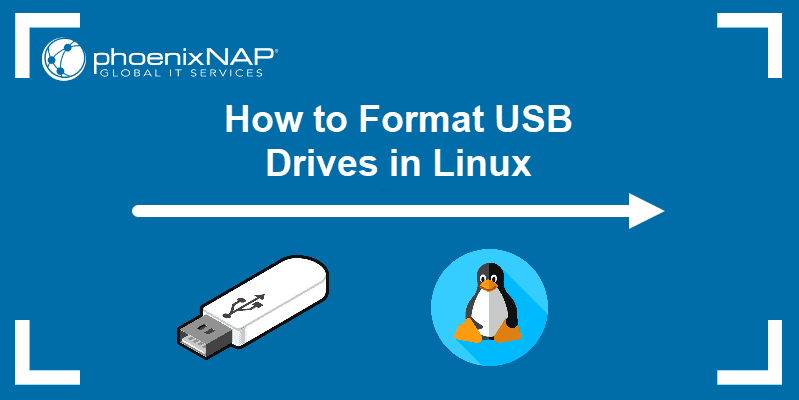
Prerequisites
- A system running Linux
- A USB drive
- Access to the last/control line
- A user account with sudo/root privileges
Which File System to Use for USB Formatting?
There are many file systems in use, differing by maximum file size and operating system compatibility. The most ordinarily used file systems when formatting a USB drive are:
- FAT32
- NTFS
- exFAT
Their main features and differences are:
| File System | Supported File Size | Compatibility | Platonic Usage |
| FAT32 | up to 4 GB | Windows, Mac, Linux | For maximum compatibility |
| NTFS | xvi EiB – 1 KB | Windows, Mac (read-only), most Linux distributions | For internal drives and Windows system files |
| exFAT | 16 EiB – 1 KB | Windows, Mac, Linux (requires extra drivers to admission) | For files larger than four GB |
Method 1: Format USB Using the Terminal
The easiest and fastest mode to format a USB bulldoze in Linux is through the terminal. The procedure consists of 3 steps:
- Locating the USB drive.
- Unmounting and formatting the USB bulldoze.
- Verifying the process was successful.
Follow the instructions below to format a USB drive using the terminal.
Step 1: Locate USB Drive
Open the terminal and run the following control:
df The terminal prints out a listing of all mounted partitions and relevant data: used space, bachelor space, used space percent, and the path.
Locate the USB in the listing and notice the corresponding device. In this case, the USB drive is /dev/sdb1 .
Notation: If you are unsure of the drive designation, unplug the USB drive temporarily before running the df command again. The device that is now gone from the listing is your USB device.
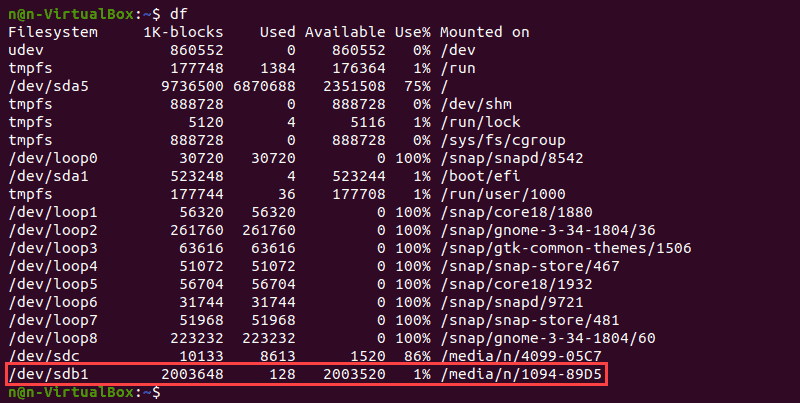
Stride ii: Unmount and Format USB Drive
Unmount the USB drives before formatting. To do so, run this command:
sudo umount /dev/sdb1 
Later on unmounting, format the USB drive using the preferred file system (replace sdb1 with the proper noun of your device):
- To format a USB drive with FAT32 file system, utilize:
sudo mkfs.vfat /dev/sdb1 - To format a USB drive using the NTFS file system run:
sudo mkfs.ntfs /dev/sdb1 - To format a USB drive in accordance with the exFAT file system use:
sudo mkfs.exfat /dev/sdb1 Step 3: Verify USB Drive Formatting
Confirm the formatting process has completed successfully:
sudo fsck /dev/sdb1 A USB bulldoze with no files indicates successful formatting.

Method 2: Format USB Using Disk Utility
The GNOME Disk Utility is a graphical tool for partitioning and formatting storage drives in Linux.
Follow the outlined steps to format a USB bulldoze using the Disk Utility tool.
Step 1: Open Disk Utility
To open the Disk Utility:
- Launch the Application menu.
- Type "disk" in the search bar.
- Click the Disks icon.

Step ii: Identify the USB Drive
Locate the USB drive from the left pane and select information technology. The right pane contains details virtually the drive, such as model name, size, serial number, and contents.
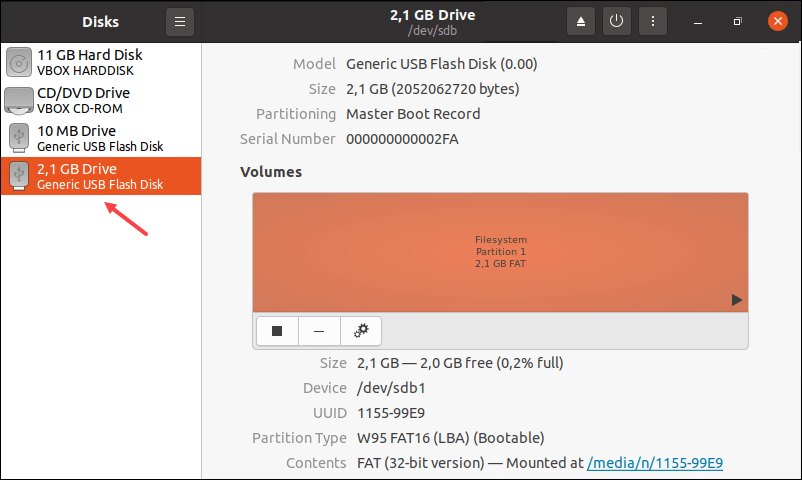
Stride iii: Format the USB Drive
1. Click the gear icon and select the Format Sectionalization option from the drop-down carte du jour.
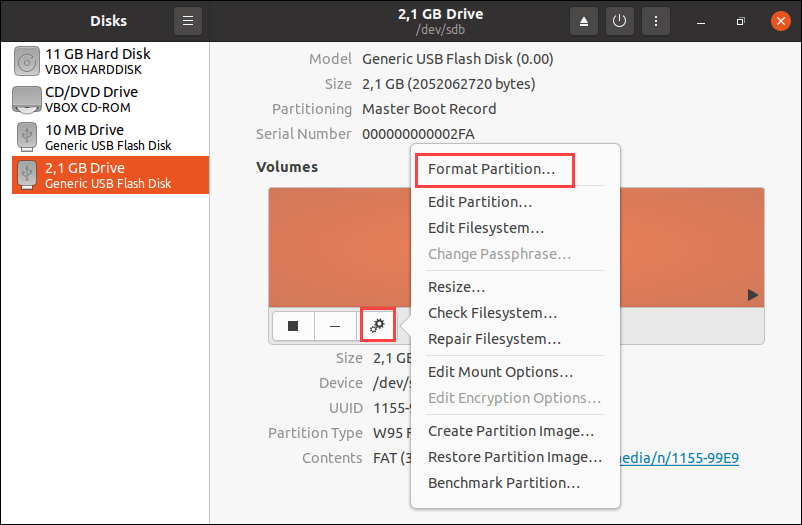
2. Type the preferred proper name for the USB drive.
Optionally, enable the Erase choice to overwrite the existing data from the USB bulldoze. Cull the file organization format and click on the Next button.
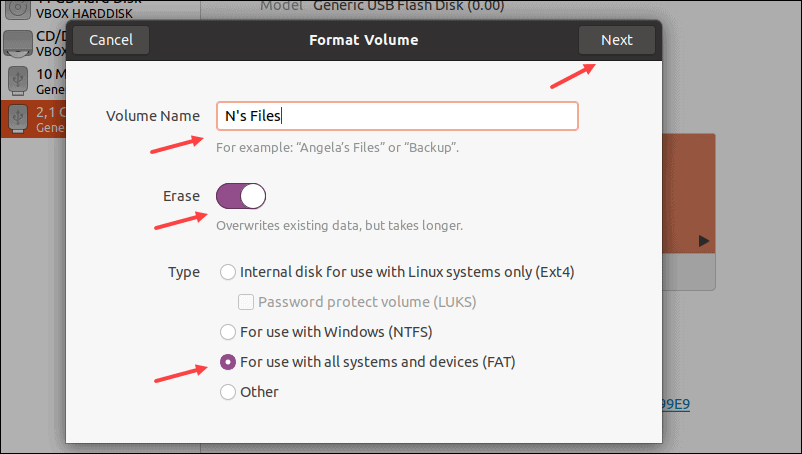
3. A pop-up appears with a alert message about data deletion and formatting details. Start the formatting procedure by clicking the Format button.
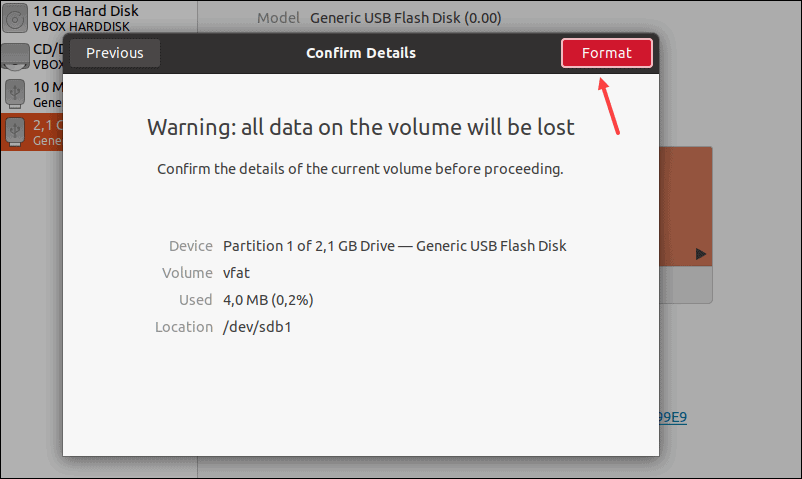
iv. The progress line displays the remaining time until the formatting procedure completes. Shut the Disk Utility when the chore completes.
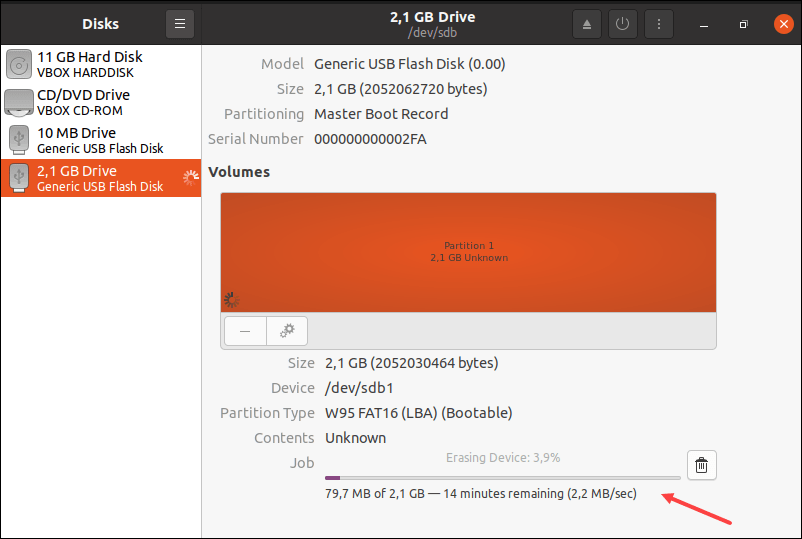
Method 3: Format USB Using GParted Tool
Formatting via GParted takes the nearly time as it involves an boosted step – installing the tool. However, information technology is a handy tool that you can use fifty-fifty after you have finished formatting the USB drive.
Follow the steps beneath to format a USB bulldoze using the GParted tool.
Stride 1: Install GParted Tool
1. Open the terminal and install the GParted tool using this control:
sudo apt install gparted Confirm the installation by pressing y and so hit Enter. Expect until the process completes.
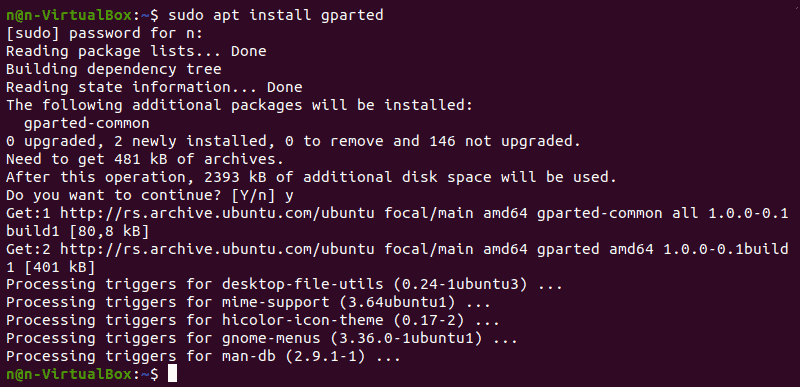
ii. Run the GParted tool with:
sudo gparted The terminal loads the GParted domicile screen.
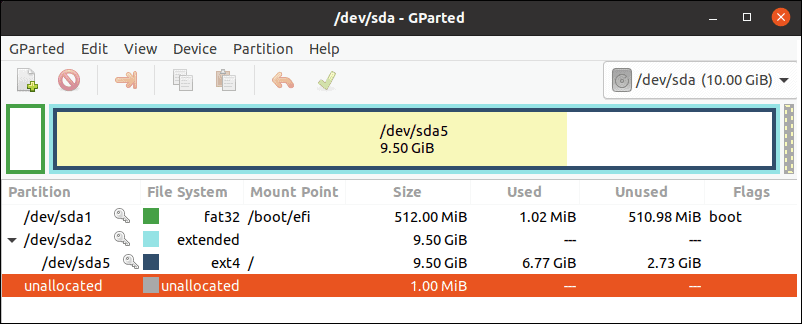
Stride 2: Start the Formatting Process
1. Select the /dev/sdb option from the drop-downwards bill of fare at the tiptop of the GParted dwelling screen.
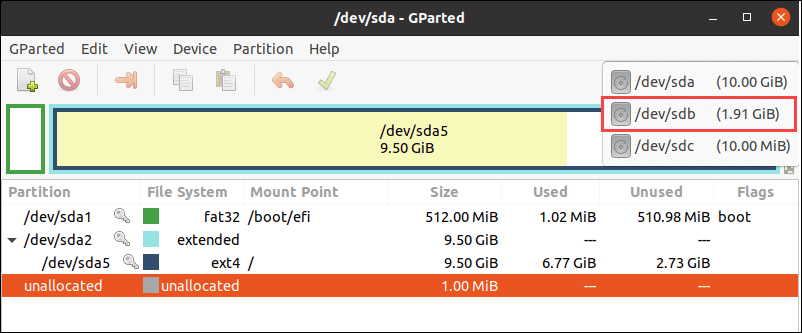
ii. Right-click the /dev/sdb1 partition and select Format to. Choose the preferred file system from the listing to continue.
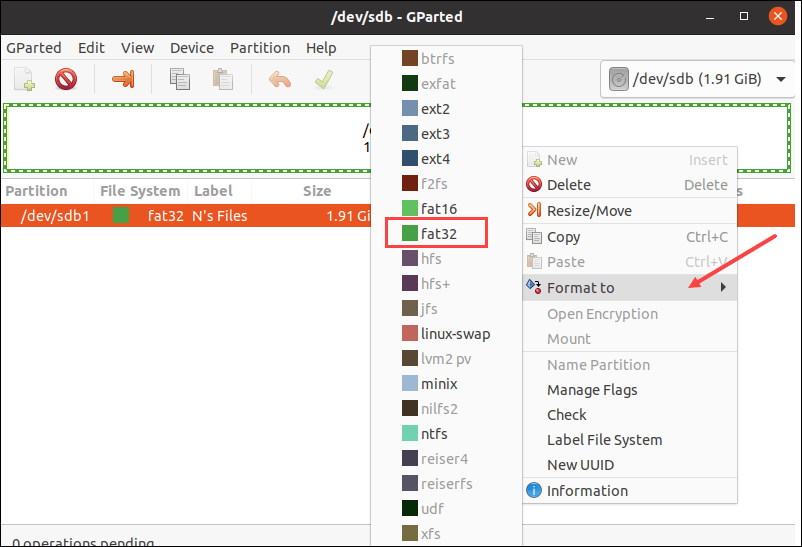
Stride 3: Start the Procedure
i. Click the dark-green checkmark button to employ all operations.

2. A pop-up appears with a alert message nigh data deletion. Click Apply to continue.
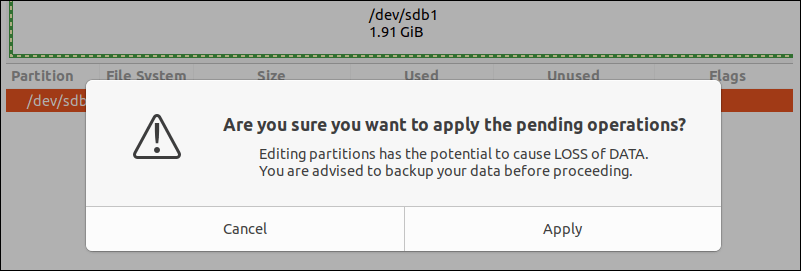
The GParted formats the drive. The time required for the formatting process varies depending on the size and type of the USB drive.
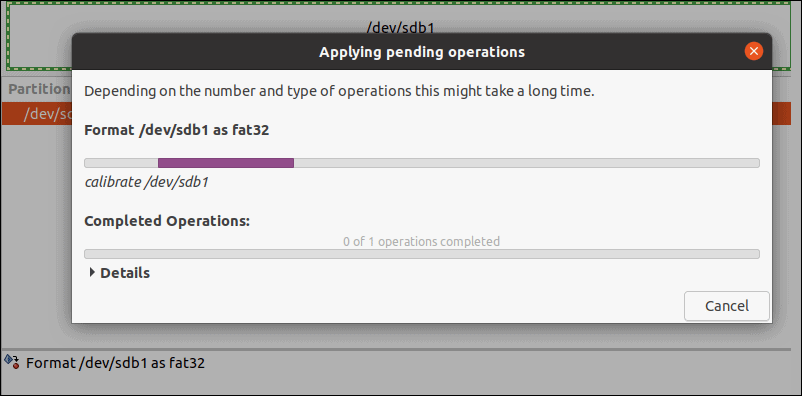
3. Click the Close button to exit the menu when the operation completes.
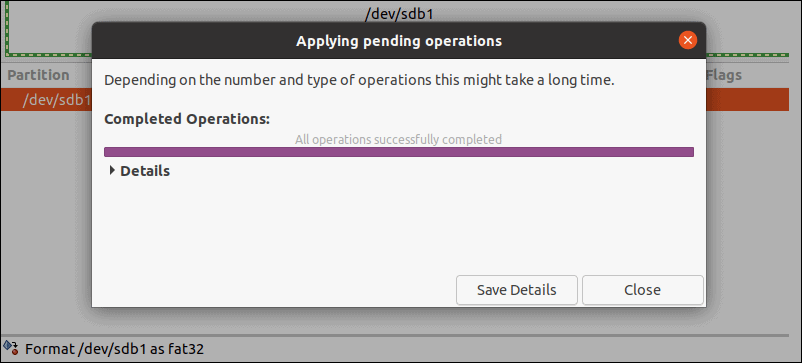
Conclusion
In this commodity, you learned how to format a USB bulldoze in Linux using several methods. Additionally, we went through the main features and differences between the 3 most usually used file systems.
Was this article helpful?
Yes No
Source: https://phoenixnap.com/kb/linux-format-usb
Posted by: hookerseepearrough.blogspot.com

0 Response to "How To Format Linux Usb In Windows"
Post a Comment